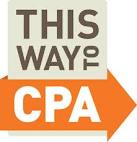
WASHINGTON — The Internal Revenue Service is moving into the next phase of its effort to improve the tax preparation industry by launching the new Registered Tax Return Preparer competency test.
The new competency test is part of a larger initiative to increase oversight of the tax preparation industry. Last year, the IRS required all paid tax return preparers to obtain a Preparer Tax Identification Number (PTIN). Those tax return preparers who currently have a valid PTIN and are required to take the new test will have until Dec. 31, 2013, to pass it.
Preparers who pass the test and meet other requirements will be given a new designation: Registered Tax Return Preparer. In order to maintain that designation, the individuals must renew their PTINs annually and complete 15 hours of continuing education each year. Enrolled Agents, Certified Public Accountants, and attorneys, among others, are exempt from the new testing and education requirements. These professional groups already meet more stringent guidelines to obtain their professional credentials.
“This is another major step forward in our effort to enhance tax preparation service to millions of taxpayers. People should feel assured that the person they hire to prepare their federal tax returns has a working knowledge of the tax code,” said Doug Shulman, IRS Commissioner. “The majority of tax return preparers are reputable professionals but the few bad apples cause great harm to taxpayers and the industry.”
The fee for the competency test is $116, which includes the IRS portion of the fee and the fee for Prometric Inc., a third-party test vendor. The test covers preparation of the Form 1040 and its related schedules. Test scheduling begins next week. Initial test takers won’t receive their test scores for two to six weeks to allow the IRS to validate the exam and determine the pass/fail cutoff. Once validation is complete, around mid-January, those taking the computer-based test will receive their scores at the test center immediately upon completing the test.
Prometric will eventually administer the test at more than 260 centers nationally, but the test is not available at all locations currently. Test sites will be added daily and international locations may be added in the future.
Over 750,000 tax return preparers have obtained PTINs. The IRS estimates that approximately 350,000 people may be initially subject to the Registered Tax Return Preparer test requirement.
Fact Sheet 2011-12 provides additional details about the test, including which preparers are required to take it and how to schedule an appointment.
Work on background check implementation plans continue
The IRS continues to study the most appropriate ways for requiring certain tax return preparers to undergo a background check. The background check is necessary to ensure tax return preparers have not engaged in disreputable conduct and are suitable for practice before the IRS. The IRS will provide additional guidance concerning the background check in coming months.
While the IRS continues to review the issues surrounding background checks, it will issue Registered Tax Return Preparer certificates to individuals who pass the Registered Tax Return Preparer test and a tax compliance check. Individuals issued Registered Tax Return Preparer certificates may begin using the Registered Tax Return Preparer designation, but they still may be subject to additional background checks that the IRS may implement in the future.
Special Enrollment Examination remains unchanged
The process for individuals to become an Enrolled Agent remains unchanged. Most Enrolled Agents have passed a comprehensive three-part IRS test (Special Enrollment Examination) covering individual and business standards and representation rules. Enrolled Agents also must complete 72 hours of continuing education every three years. Most Enrolled Agents have unlimited practice rights before the IRS, which means they can represent clients regarding any tax matter.
The process for registering and taking the Special Enrollment Examination remains unchanged. More information on the Registered Tax Return Preparer Competency Examination and the Special Enrollment Examination is available at www.IRS.gov/taxpros/tests.
PTIN renewal season reminder
All PTIN holders must renew their PTINs for the 2012 filing season by Dec. 31, 2011. The PTIN renewal fee for 2012 is $63. Return preparers who obtained their PTINs by creating an online account should renew their PTINs at www.IRS.gov/ptin.
Preparers who used paper applications to receive their 2011 PTINs were sent an activation code that they can use to create an online account and convert to an electronic renewal for 2012. Individuals can also renew using a paper Form W-12, IRS Paid Preparer Tax Identification Number Application, but renewing electronically avoids a four to six week wait for processing the renewal request.










